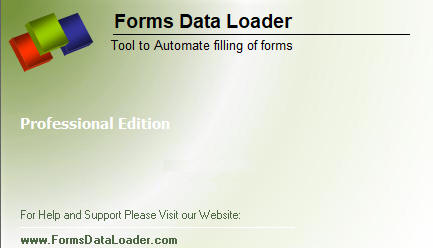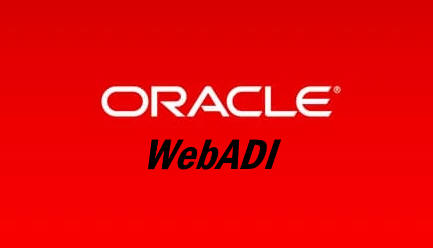Why Forms Data Loader (FDL) is Better than Manual Entry or WebADI
In the world of Oracle E-Business Suite (EBS) and other enterprise applications, data entry is an everyday task – whether uploading new data, updating records, or migrating during upgrades and implementations. Traditionally, businesses have relied on manual entry or tools like Oracle WebADI for these operations. However, Forms Data Loader (FDL) also known as "Data Loader" and the newer HTML Data Loader (HDL) have emerged as superior alternatives, transforming data loading into a faster, more reliable, and cost-effective process.
Let us explore why FDL and HDL are better than manual entry or WebADI.


1. Speed and Productivity
-
Manual Entry: Data entry clerks spend hours entering records one by one, prone to fatigue and errors, resulting in delays and rework.
-
WebADI: While WebADI allows uploading through Excel, it still requires preparation of templates, correct formatting, and validation cycles which may fail due to minor data mismatches, slowing the process.
-
Forms Data Loader: FDL automates keystrokes into Oracle forms directly, loading thousands of records rapidly without manual typing. Once a loader script is prepared, it runs unattended, freeing resources for other productive tasks.
-
HTML Data Loader: Designed for web-based data entry forms, HDL automates data entry into any browser-based application, including Oracle EBS Self Service pages, cloud applications, and third-party portals. It works seamlessly by reading data from Excel or text files and simulating user entry in web forms, saving enormous time in cloud environments.
2. Ease of Use
-
Manual Entry: Requires human effort for every record and basic form navigation skills, but is tedious and repetitive.
-
WebADI: Needs users to understand template structures, create or download the correct integrator template, and ensure data mapping accuracy.
-
Forms Data Loader: Extremely user-friendly, as it simulates data entry in the actual forms. Users do not need to know integrators or backend tables. They simply prepare data in Excel or text format, map it, and run the loader. Minimal training is sufficient, empowering even non-technical users.
-
HTML Data Loader: No programming or API integration is needed. Users simply prepare their data, build the template sheet by entering a sample record, and HDL automates the entry. Its intuitive interface ensures quick learning for business users.
3. Flexibility Across Applications
-
Manual Entry: Limited to direct form inputs. No automation.
-
WebADI: Works only with supported Oracle modules and integrators. If an integrator does not exist for a business function, WebADI cannot be used.
-
Forms Data Loader: Works with any Oracle EBS form, including custom forms, and even with other Windows-based applications like SAP or in-house ERP systems. Its generic keystroke automation approach makes it universally adaptable.
-
HTML Data Loader: Works with any web-based application, whether Oracle Cloud, Salesforce, SAP Fiori, or in-house developed web apps. It is browser independent and supports Chrome, Edge, and Firefox, enabling cross-application automation.
4. Error Reduction and Reliability
-
Manual Entry: Highly error-prone due to fatigue, typing mistakes, or skipped fields.
-
WebADI: Template errors, wrong mapping, or validation failures cause upload rejections, requiring multiple correction cycles.
-
Forms Data Loader: Loads exactly what is configured in the script, reducing human entry errors. Additionally, it provides logs for every session, allowing quick issue resolution if any data fails validation in the application.
-
HTML Data Loader: Automates web data entry accurately. Since it mimics human typing in forms, it respects form validations, resulting in clean data uploads with minimal rejections. Logs and execution status help track each upload precisely. Marks the rows with different colors for successfully loaded rows and error rows.
5. Cost Effectiveness
-
Manual Entry: Requires more manpower and time, increasing costs over large volumes.
-
WebADI: Though included with Oracle licenses, training costs and template preparation time add indirect costs.
-
Forms Data Loader: Minimal setup time, fast uploads, and no dependency on expensive developer resources or IT teams. ROI is achieved quickly through time savings and error reduction.
-
HTML Data Loader: Automates web-based data entry without expensive API or integration development. Businesses avoid developer costs for building interfaces to third-party applications, leading to significant savings.
6. No Special Technical Knowledge Needed
-
Manual Entry: Non-technical users can do it but with limitations in speed.
-
WebADI: Requires understanding of Excel templates, integrators, and sometimes backend validation processes.
-
Forms Data Loader: Designed for end-users. No technical or programming skills are required to prepare loader scripts. Even business users can automate their data uploads efficiently.
-
HTML Data Loader: Equally simple, requiring only basic knowledge of data preparation and field mapping. No knowledge of HTML, JavaScript, or automation coding is needed.
7. Works Where WebADI Does Not
One of the biggest advantages of FDL is that it works even when WebADI integrators are unavailable. For custom forms, third-party modules, or legacy systems, WebADI is ineffective, while FDL works seamlessly by simulating keystrokes.
While manual entry is too slow and error-prone for
modern enterprises, WebADI has limitations in module coverage,
complexity, and formatting issues. Forms Data Loader overcomes these for
Oracle EBS Forms, while HTML Data Loader extends automation to web-based
applications, including Oracle Cloud and beyond.
By adopting Forms
Data Loader and HTML Data Loader, businesses can:
✅ Save time
✅ Reduce costs
✅ Improve data
accuracy
✅ Empower business users
✅ Avoid costly integrations
In today’s competitive landscape where speed, accuracy, and agility define success, FDL and HDL stand out as the smartest choices for rapid, reliable, and hassle-free data uploads across desktop and cloud applications.
Recommended Articles:

